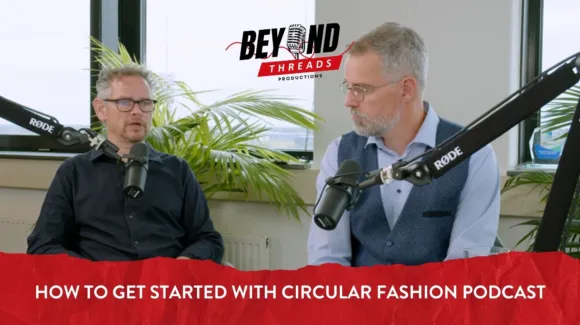In the previous Beyond Threads podcast, Bleckmann’s Erik Jansen Steenberg and Nicole Bassett discussed how implementing circular business models can create long-term value for fashion brands. In part two of their conversation, they focus on how brands can successfully integrate circular practices into their day-to-day operations.
Shifting mindsets: The new definition of sustainable success
Many forward-thinking brands across sectors are already embracing elements fundamental to circular economics. Modern business performance now encompasses medium to long-term growth forecasts, employee well-being and social responsibility as core success indicators, as well as traditional revenue and profit metrics.
This evolution reflects a broader market transformation. Today’s consumers are more environmentally conscious than ever before, actively seeking brands that mirror their personal values and commitment to sustainability.1 “Consumer expectations are shifting,” Nicole observes. “People are more aware of environmental impacts and want to support brands that align with their values. Those who invest in circular models will lead the next wave of sustainable innovation.”
Listen To Audio Only
Real-world implementation: Circular practices across industries
Many businesses are already translating circular principles into tangible operational strategies. Fashion brands, for example, are pioneering repair services, second-hand resale platforms and rental programmes to maximise product lifecycles. Meanwhile, technology leaders such as Apple and Fairphone are extending device longevity through strategic software support and modular upgrade systems.
Within fashion fulfilment, companies like Bleckmann are implementing comprehensive circular logistics frameworks – expertly managing returns, refurbishments, resale and recycling processes to maintain product quality and utility while reducing landfill waste. These strategic implementations create pathways to enhanced profitability, stronger customer loyalty and improved operational resilience.
The future of circularity in the fashion industry
Looking ahead, the circularity trend is set to continue accelerating. “The transition won't be immediate,” Nicole acknowledges. “However, we’re already seeing financial markets, policymakers and entrepreneurs starting to rethink economic value beyond GDP. We’re entering an era where regenerative and distributive business models will define success.”
Want to find out more about how your brand can successfully implement circular frameworks? Press play on the Beyond Threads podcast to hear the full story, or get in contact for a free consultation with a Bleckmann expert!
















